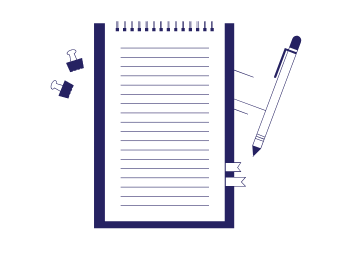
- 5-minute read
- 21st February 2021
5 Tips to Enhance Your Close Reading Skills
Close reading is an important part of studying literature. Typically, this means reading a short passage of text in detail to analyse how it works. But how do you do this effectively? We have five tips to help you get started:
- Think about why you’re doing a close reading and create a list of questions you want to answer. These will guide your analysis.
- Read carefully, take notes, and annotate the text as you read.
- Look for patterns in the text, including stylistic and thematic repetition.
- Reread the text several times to make sure you pick out every detail.
- Summarise your notes before writing up your analysis.
Below, we will look at each of these tips in a bit more detail.
1. Think Before Reading
Close reading involves looking closely at the text. But before you start, you need to have a sense of what you are looking for in your close reading.
If you’re a student, this will probably depend on the essay title or assignment you were set. Or it could just be some aspect of the text you want to explore.
In either case, before you start reading, note a few questions or ideas that interest you about the piece. You might notice other things once you start exploring the text, but you can use these questions as a jumping off point for your analysis.
2. Take Notes as You Read
When you start reading the text, read slowly and take notes. This forces you to pay attention and read actively rather than passively absorb the text.
Exactly what you look for will depend on the text you’re reading. However, you should note down or highlight anything that could be relevant to your analysis, or that jumps out at you for some reason. Typically, this will include things like:
- The subject matter and themes of the passage
- Interesting or unusual words and phrases
- How the text is structured
- Any imagery or metaphors used by the author
- For works of fiction, the characters and narration
- For poetry, the poetic form used other poetic techniques
You could also annotate the text directly by highlighting key passages or making notes in the margin. If you want to do this, though, make sure you’re allowed first. Librarians may get upset if you return a book with more writing than it started with!
3. Look for Patterns in the Text
Look for patterns in the text, such as where the author has used repetition or contrast. Patterns like these usually indicate an attempt to stress an idea, draw attention to something, or create a specific tone or rhythm in the text.
These patterns can be thematic (i.e. related to what the text is about) or formal (i.e. related to how the text is written). Or they might be both.
Find this useful?
Subscribe to our newsletter and get writing tips from our editors straight to your inbox.
For instance, a poet might use rhyme and assonance to make a poem flow in a certain way. But by using those rhymes to connect specific words they can also link or contrast ideas, affecting how we interpret them in the poem.
As such, make sure to look for these kinds of connections and contrasts when you are close reading. If a pattern jumps out at you, it is probably there for a reason!
4. Reread the Text
Close reading requires reading a text more than once. This ensures you don’t miss anything important as well as making you engage with the text in a different way.
To start, read the passage in full once to familiarise yourself with it, making notes on anything that jumps out. But after this first read through, focus on an individual element of the text each time, such as its structure, language, or themes. You can also read the passage aloud to get a sense of its rhythm and tone.
Doing this will help you spot things you might have missed otherwise, since you will be able to focus on one aspect of the text at a time.
5. Summarise Your Thoughts
The final step is to summarise your thoughts. This means organising your notes in preparation for writing up an analysis. To do this:
- Group notes together under headings, such as ‘Themes’ and ‘Language’. This will help you spot connections you might have missed before.
- Use your initial notes and your essay/assignment question to select the most relevant details for your analysis.
- Think critically about anything from your notes that challenges your initial ideas or that does not seem to fit with your overall analysis.
- Where relevant, paraphrase key ideas in your own words, then compare your version to the original text to make sure you’ve fully understood it.
This will make it easier to approach writing up your work.
Expert Academic Proofreading
We hope these close reading tips help you in your academic writing. Once you have written up your work, though, don’t forget to have it proofread by the experts! Sign up for a free trial of our proofreading services today to find out more.




